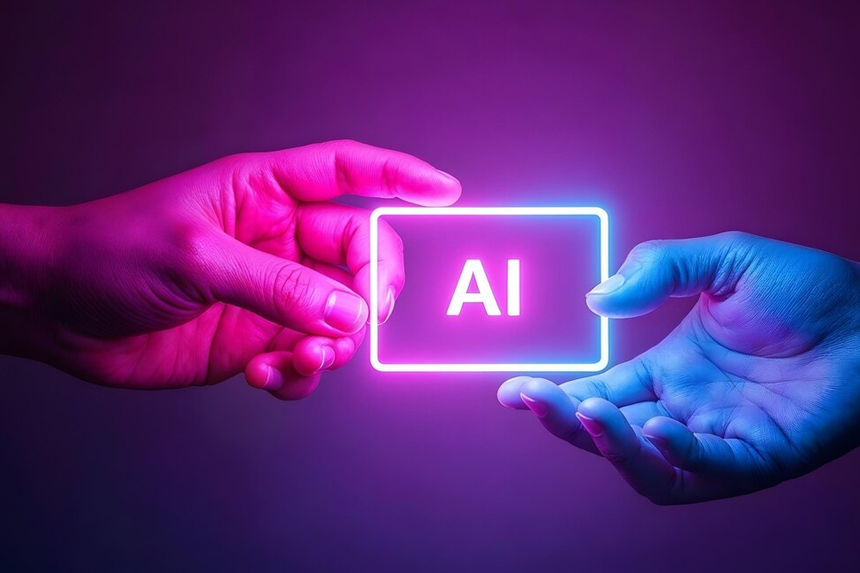Two years after generative artificial intelligence swept the globe, China’s DeepSeek has rocked the tech sector by sharply lowering the cost of creating AI applications. But India’s AI is lagging as the global race for AI supremacy gets more intense, especially in developing its basic language model, which drives projects like chatbots.
The government promises that a native equivalent of DeepSeek is not far off. To hasten development, it is supplying businesses, institutions, and researchers with thousands of high-end chips, intending to establish a basic India AI model within 10 months. Although this is a positive start, many contend that India still requires significant policy changes and research money if it is to really compete with AI superpowers like the US and China.
What Are Leaders in Global AI Saying About India?
Several world leaders in artificial intelligence have recently recognized India’s AI potential. Initially dubious, OpenAI CEO Sam Altman later said that India should dominate in artificial intelligence. By users right now, India is OpenAI’s second biggest market.
Meanwhile, Microsoft has committed $3 billion to cloud and AI infrastructure in India. According to Nvidia CEO Jensen Huang, unlocking India’s AI potential depends critically on its “unmatched” technical capacity. There is a lot of entrepreneurial activity in the nation since more than 200 businesses are working on generative artificial intelligence. India AI still struggles to get significant financing in spite of these investments and acknowledgements, though, compared to other countries.
What Are the Challenges of Holding India Back?
Experts believe India’s AI risks lagging without fundamental reforms in education, research, and state policy, even if key elements for AI success exist.
Having heavily invested in research, academia, and artificial intelligence applications for military and law enforcement uses, technology analyst Prasanto Roy notes that the US and China have a four-to-five-year head start. “Long-term planning and large funding help China and the US to be much ahead,” he said.
India also suffers from a dearth of infrastructure tailored explicitly for artificial intelligence, ranging from research facilities to computer capability. Although some private businesses have responded to this problem, the lack of government-backed research projects and funding for deep-tech projects keeps advancement slow. Further widening the disparity between India’s AI and global rivals, the country’s antiquated curriculum in many technical institutions does not equip students with the newest artificial intelligence skills.
How Does India Compare in AI Patents and Investments?
Between 2010 and 2022, China and the US accounted for 60% and 20% of worldwide AI patents, respectively, while India secured less than 0.5%.
Furthermore, just a tiny portion of the private money US and Chinese companies attracted in 2023 went to Indian artificial intelligence startups. The Indian government’s AI mission is valued at just $1 billion—a stark contrast to the $500 billion the US has allocated for its Stargate AI infrastructure project and China’s reported $137 billion initiative to become an AI leader by 2030.
Another difficulty for India AI is the predominance of foreign players in the market. Many Indian startups depend on American and Chinese cloud services and artificial intelligence tools, restricting local innovation. Without sufficient domestic investment and policy support, India risks becoming unduly dependent on foreign AI solutions rather than establishing its ecosystem.
Can India Overcome Its AI Infrastructure Challenges?
DeepSeek’s proven artificial intelligence models show one of the few silver linings for India: they can be created with less expensive, older chips. This offers India AI a workable road forward for artificial intelligence development. Jaspreet Bindra, founder of an artificial intelligence consulting company, cautions, “Despite claims of DeepSeek developing a model with $5.6 million, the actual investment behind it was significantly larger.”
A key obstacle for India AI is the dearth of high-quality, India-specific datasets needed to train AI models in regional languages such as Hindi, Marathi, or Tamil. The tremendous linguistic variety of the nation makes this still a complex problem. Without a coordinated effort to build local datasets, India’s AI models would find it challenging to compete worldwide, particularly in uses requiring language understanding.
Why Is India Losing Its AI Talent?
With 15% of the global AI workforce derived from India, the country has extraordinary AI capability. However, many skilled professionals are leaving the country for better opportunities abroad. According to Stanford’s AI talent migration research, India’s AI is facing a brain drain due to the lack of deep-tech research and development opportunities at home.
“Foundational AI innovations usually result from great R&D in companies and universities,” Bindra says. “India lacks a strong research ecosystem, making it difficult to compete globally.”
The difficulty is not just about keeping talent but also about fostering an atmosphere where AI specialists may thrive. Countries like the US and China provide high incomes, cutting-edge research possibilities, and more significant funding, making them tempting destinations for India’s greatest minds. If India AI does not create a comparable ecosystem, the talent exodus will continue.
What lessons might India pick from its success with digital payments?
Experts argue that India’s AI can replicate the success of its digital payment revolution in AI. Designed by a government agency, the Unified Payments Interface (UPI) revolutionized digital payments by allowing quick clicks of a button or QR scan to enable flawless transactions. This feat was made possible through a vigorous collaboration between government, industry, and academics.
A similar approach is needed for India AI to become a global AI powerhouse. If India AI is to compete with giants like the US and China, a long-term vision, significant investment, and structural changes in research and education are absolutely vital.
Policymakers should also concentrate on encouraging academic cooperation, motivating commercial investment in AI businesses, and developing infrastructure supporting thorough research. Should the government and business sector cooperate to establish an environment akin to the one driving India’s fintech boom, India AI may emerge as a worldwide power in the AI scene.




